Multi-Input Converter with MPPT Feature for Wind-PV Power Generation System
Abstract
A multi-input converter (MIC) to process wind-PV power is proposed, designed, analyzed, simulated, and implemented. The MIC cannot only process solar energy but deal with wind power, of which structure is derived from forward-type DC/DC converter to step-down/up voltage for charger systems, DC distribution applications, or grid connection. The MIC comprises an upper modified double-ended forward, a lower modified double-ended forward, a common output inductor, and a DSP-based system controller. The two modified double-ended forwards can operate individually or simultaneously so as to accommodate the variation of the hybrid renewable energy under different atmospheric conditions. While the MIC operates at interleaving mode, better performance can be achieved and volume also is reduced. The proposed MIC is capable of recycling the energy stored in the leakage inductance and obtaining high step-up output voltage. In order to draw maximum power from wind turbine and PV panel, perturb-and-observe method is adopted to achieve maximum power point tracking (MPPT) feature. The MIC is constructed, analyzed, simulated, and tested. Simulations and hardware measurements have demonstrated the feasibility and functionality of the proposed multi-input converter.
1. Introduction
Conventionally, electric power is mainly generated from fossil fuels. However, this kind of energy resources is highly limited and will be exhausted in the near future. With the rapid requirement of electricity and the increase of worse and worse energy crisis, it is of great urgency to replace the fossil fuels with renewable energy. Among the renewable resources, solar energy and wind power attract a great deal of interest owing to their easy acquirement.
In photovoltaic (PV) or wind power generation system, a power converter is needed so as to process renewable energy. In literature [1–5] PV converters are presented while wind power converters are studied in [6–10]. However, these power converters only handle a single kind of renewable energy, that is, which cannot deal with multi-input power. Therefore, some researchers propose multi-input converters for solar-wind hybrid power generation system. As shown in Figure 1, a series double-boost converter is presented to process PV power and wind energy simultaneously [11], in which, as compared with single-boost configuration, power component only imposes one-half power rating. Even though this boost-type converter steps up the voltage and is suitable for a high voltage supply, it cannot be applied to galvanic isolated applications. Double-input buck-boost converter shown in Figure 2 is capable of processing high-/low-voltage sources [12]. Like boost-type converter, this type of configuration is still nonisolated electrically. Instead of combining renewable energy in electricity, the concept of magnetic flux additivity is proposed to design a multi-input isolated converter, as shown in Figure 3, but its structure is complex and control low is complicated [13]. In order to simplify power-stage configuration, the forward-derived configuration is proposed. However, it cannot trap the energy in the leakage inductor and is incapable of applying to high output voltage applications [14].
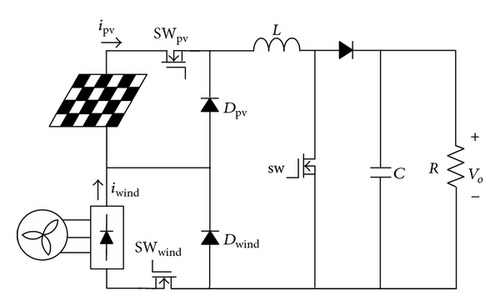
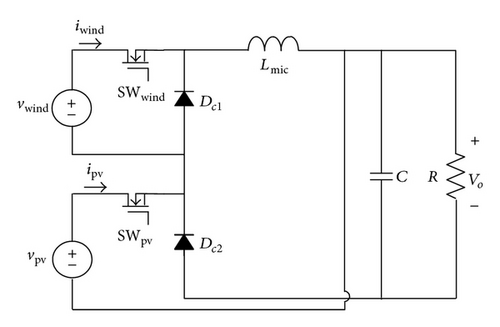

In this paper, a multi-input converter (MIC) is proposed, which can not only deal with PV power and wind-turbine energy simultaneously/individually but recycles the leakage-inductance energy and steps up the input voltage. As compared with the aforementioned isolated double-input converter, the proposed one has a much simpler structure. Furthermore, the proposed MIC removes the third winding from the conventional forward converter, which releases the energy stored in the magnetizing inductor to a capacitor through the second winding. As a result, its output voltage can be stepped up significantly and the efficiency is improved. Simulated and practical results have validated the proposed PV-wind MIC.
In this paper, system architecture of the proposed MIC is described in Section 2. Section 3 presents the operational principle of the converter, while simulations and practical measurements to verify the feasibility of the MIC are shown in Section 4. Finally, conclusion is given in Section 5.
2. Configuration of the Proposed Converter
Figure 4 illustrates the block diagram of the proposed MIC, which mainly includes PV arrays, a wind turbine, a high step-up multi-input converter, and a system controller. Figure 5 shows the corresponding schematics of the main power stage of the MIC. In Figure 5, the MIC is composed of an upper modified double-ended forward, a lower modified double-ended forward, a common output filter Lmic, and a system controller. The upper modified double-ended forward is in charge of dealing with wind-turbine energy while the lower one processes solar power. The both modified double-ended forwards can be operated independently, which expands the degree of control freedom. The active switches in the upper forward or in the lower one are switched synchronously so as to trap the leakage energy and to release the magnetizing inductance energy. The capacitors in the secondary windings, Cwind and Cpv, will absorb the energy of magnetizing inductance and then can boost the output voltage. The system controller determines the control signals to perform output power controlling and maximum power point tracking (MPPT). In this paper, perturb-and-observe method is adopted for MPPT.
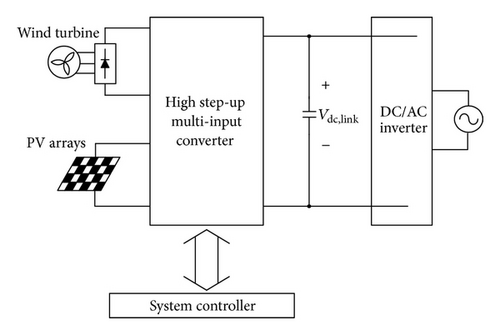
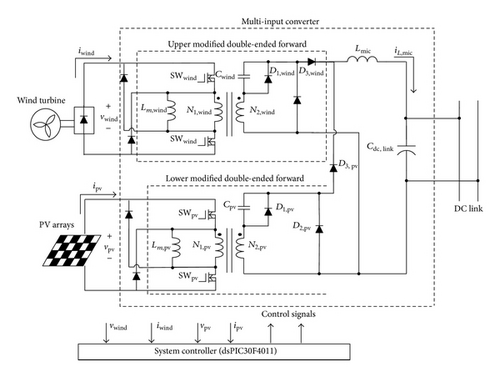
3. Operation Principle of the Proposed Converter
In Figure 5 the two modified double-ended forwards can operate individually to deal with PV power and wind energy. To achieve better output performance and to lower the output filter volume, the switches SWwind and SWpv are turned on alternatively with a duty ratio less than 0.5 at the same switching frequency. Figure 5 shows conceptual key waveforms. According to the conduction status of the switches SWwind and SWpv, the operation of the MIC over one switching period can be mainly divided into four modes. Corresponding equivalents are presented in Figure 6. Each operation mode is described in the following.
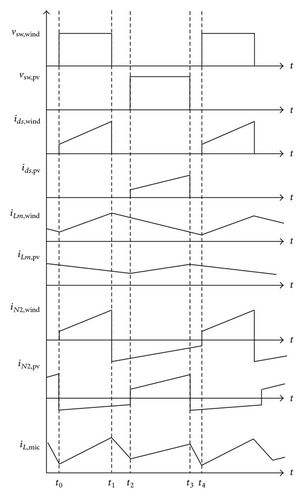
Mode 1 (Figure 7(a), t0 ≤ t < t1). During the interval of Mode 1, the status of switches SWwind is on but SWpv off. While SWwind conducts at t0, this mode begins. The active switch SWpv is in the off-state, and the magnetizing inductor of the lower modified forward discharges energy through the path of N2,pv-D2,pv-Cpv. Meanwhile, wind power is forwarded to output. Therefore, iL,mic is linearly built and can be described as

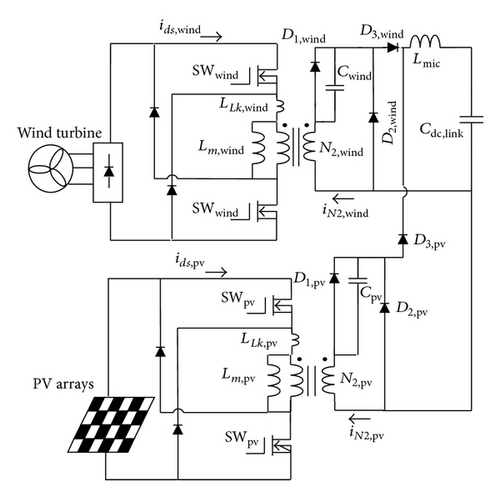
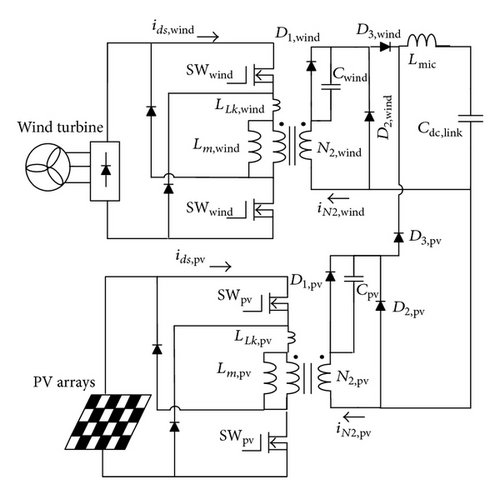
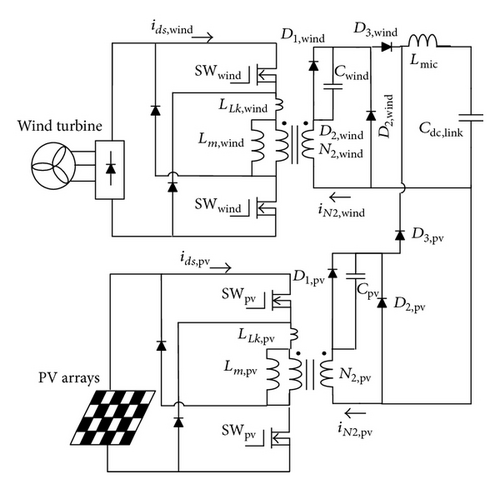
Mode 2 (Figure 7(b), t1 ≤ t < t2). In Mode 2, all the active switches are in off-state. At time t1, the switch SWwind is turned off and SWpv in the lower forward still stays in the off-state. The magnetizing inductor in the upper modified forward Lm,wind discharges via the path of N2,wind-D2,wind-Cwind, while the energy of leakage inductor LLK,wind is trapped. The voltages across Cwind and Cpv, vc,wind and vc,pv, are obtained by
Mode 3 (Figure 7(c), t2 ≤ t < t3). During this mode, SWpv is in the on-state but SWwind in off-state. Since the SWpv is turned on at t2, thus PV energy is dealt with by the lower modified forward. The inductor current iL,mic increases linearly. The inductor Lm,wind releases the energy to the capacitor Cwind through the path of N2,wind-D2,wind-Cwind. In this interval, the current of output inductor Lmic is linearly built and can be described as
Mode 4 (Figure 7(d), t3 ≤ t < t4). At time t3, the switch SWpv is turned off and the operation of the MIC enters into Mode 4. That is, in Mode 4 all active switches are off. During this mode, the magnetizing inductor Lm,pv releases energy to capacitor Cpv via N2,pv, D2,pv, and Cpv. In addition, the energy stored in leakage inductance is recycled. Meanwhile, the output inductor discharges and the current iL,mic decreases linearly, which can be expressed as
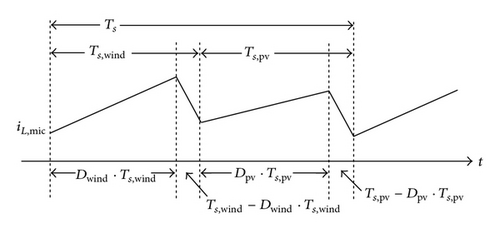
In the MIC, perturb-and-observe method is employed to draw maximum power from wind turbine and PV arrays since it is easy to carry out. The perturb-and-observe MPPT is realized by dsPIC30F4011. The related flowchart is presented in Figure 9.
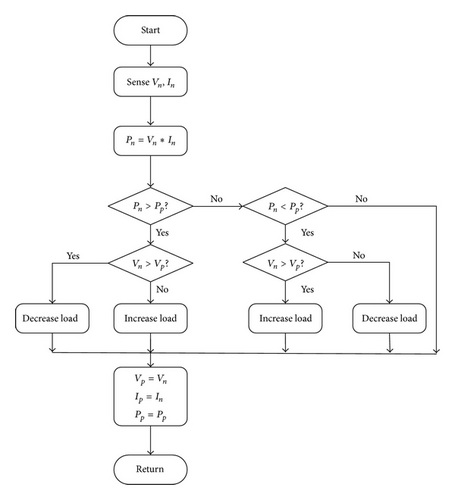
4. Simulations and Practical Measurements
-
(i) PV panel voltage: vpv = 40–56 V,
-
(ii) wind turbine voltage: vwind = 22–48 V,
-
(iii) dc-link voltage: 200 V,
-
(iv) upper modified double-ended forward: 350 W,
-
(v) lower modified double-ended forward: 350 W,
-
(vi) switching frequency: 50 kHz for all active switches,
-
(vii) output inductance: Lmic = 400 μH,
-
(viii) output capacitance: Cdc,link = 400 μF,
-
(ix) capacitance of upper forward: Cwind = 22 μF,
-
(x) capacitance of lower forward: Cpv = 22 μF.
In the case of only wind turbine providing 350 W, the simulated active switch signals and corresponding output inductor current are shown in Figures 10 and 11, respectively, while Figures 12 and 13 are the practical measurements. With the perturb-and-observe method for maximum power point tracking, the measured result is shown in Figure 14, which has illustrated that the upper modified double-ended forward can draw the maximum power from wind turbine. If only 350 W PV power feeds the MIC, simulations of control signals for active switches and output inductor current are presented in Figures 15 and 16. In addition, Figures 17 and 18 are the measured results. For MPPT feature verification, Figure 19 is the relationship between PV power and the terminal voltage of PV panel, from which it can be found that the proposed MIC is able to draw maximum power from PV panel. From Figures 10–19, it has been demonstrated that the proposed MIC is capable of dealing with individual renewable power. As the solar power and wind energy feed the MIC simultaneously, Figures 20 and 21 show the simulations of control signals and output inductor current. Then, Figures 22 and 23 present the hardware measurements. In addition, switch currents are also shown in Figure 24, in which the upper trace and the lower trace are the drain-to-source currents of SWwind and SWpv, respectively. Figure 25 is the hardware measurements of the secondary currents iN2,wind and iN2,pv. All the experimental results correspond with the theoretical waveforms in Figure 6. From Figures 20–25, it is verified that the MIC not only can process hybrid wind-PV power but can operate in interleaved mode for current ripple suppression. Additionally, in Figures 21 and 23, the ripple of output inductor current is double the switch frequency, which results in lower volume requirement for output filter inductor. The measured efficiency of the MIC is shown in Figure 26. In the case of wind turbine shutting down from the hybrid power generation system, the output power variation of the MIC is shown in Figure 27. For converse condition, the related output power curve is shown in Figure 28.
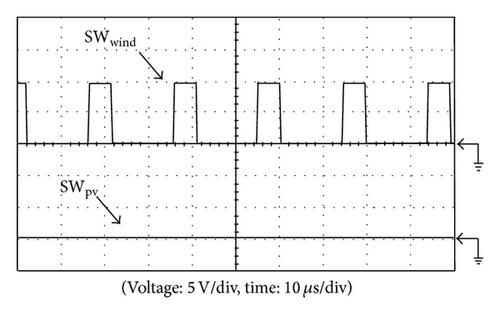
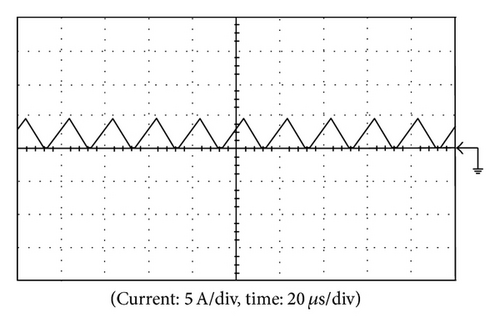
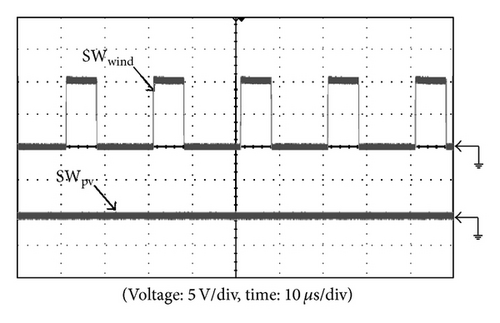
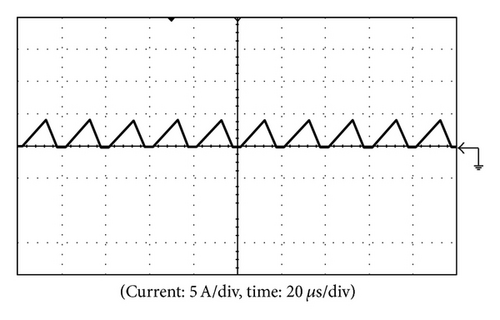

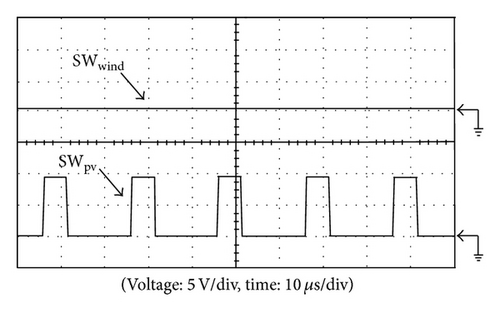
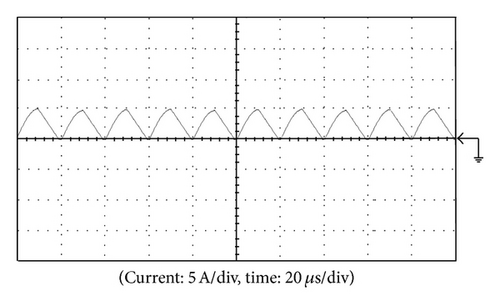
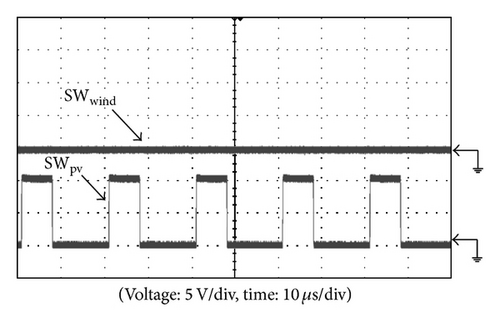
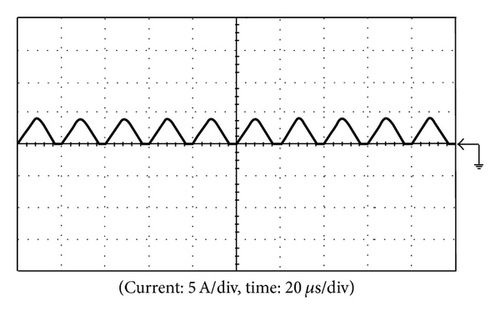
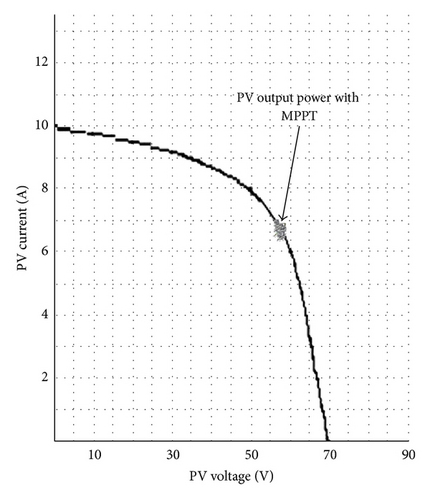
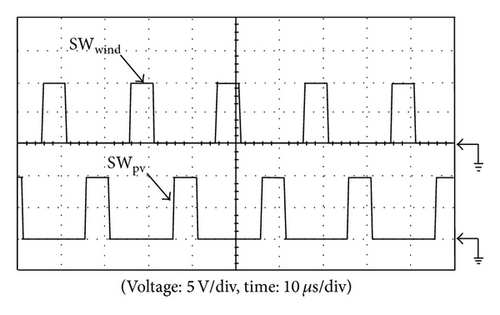
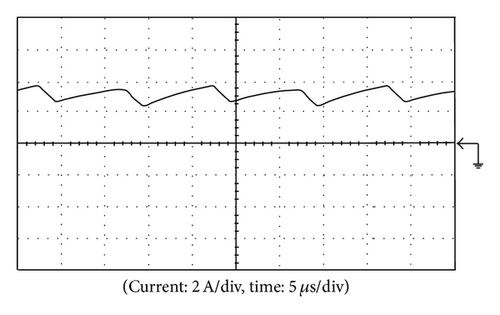
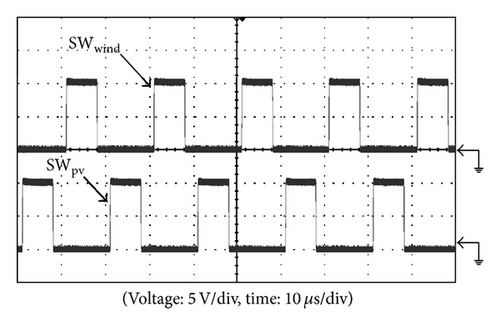
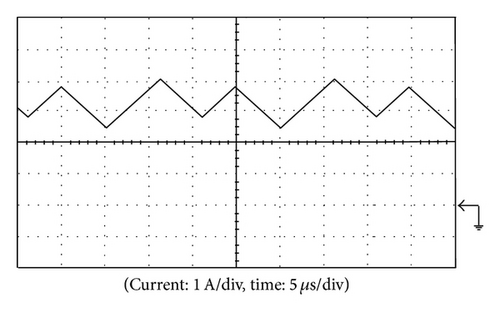
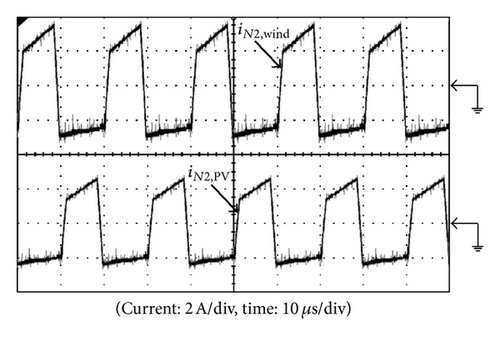
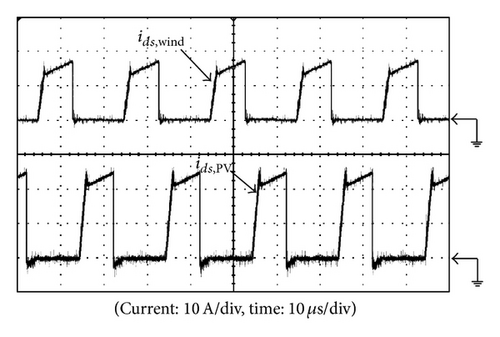
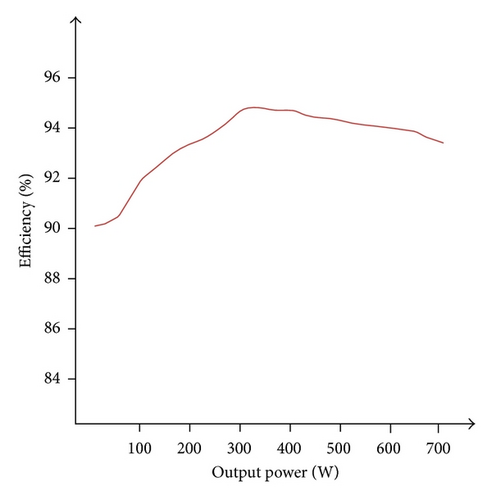
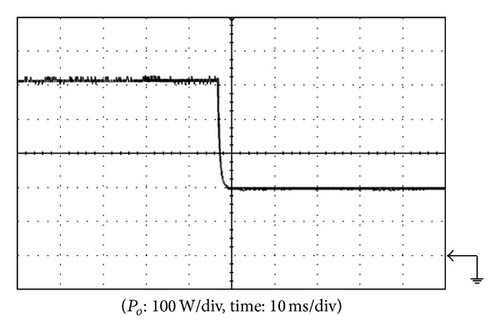
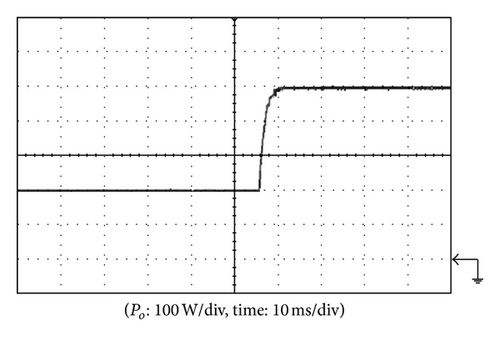
5. Conclusions
This paper proposed a galvanic isolated multi-input converter to deal with wind turbine energy and solar power with MPPT feature. The converter integrates two forward converters and only uses one output inductor. Therefore, the structure of the proposed MIC can lower the volume of the converter. In addition, the MIC can operate in interleaved mode so that the output current ripple is suppressed significantly. The energy stored in leakage inductor can be recycled, which improves efficiency. In this paper, the proposed MIC is analyzed, simulated, and tested. Simulations and hardware measurements have validated the proposed MIC.




